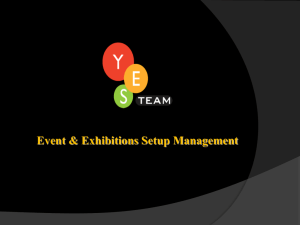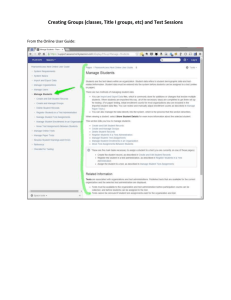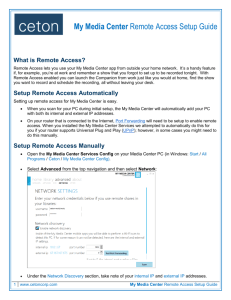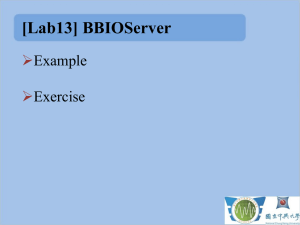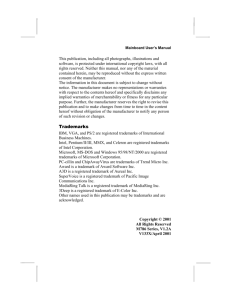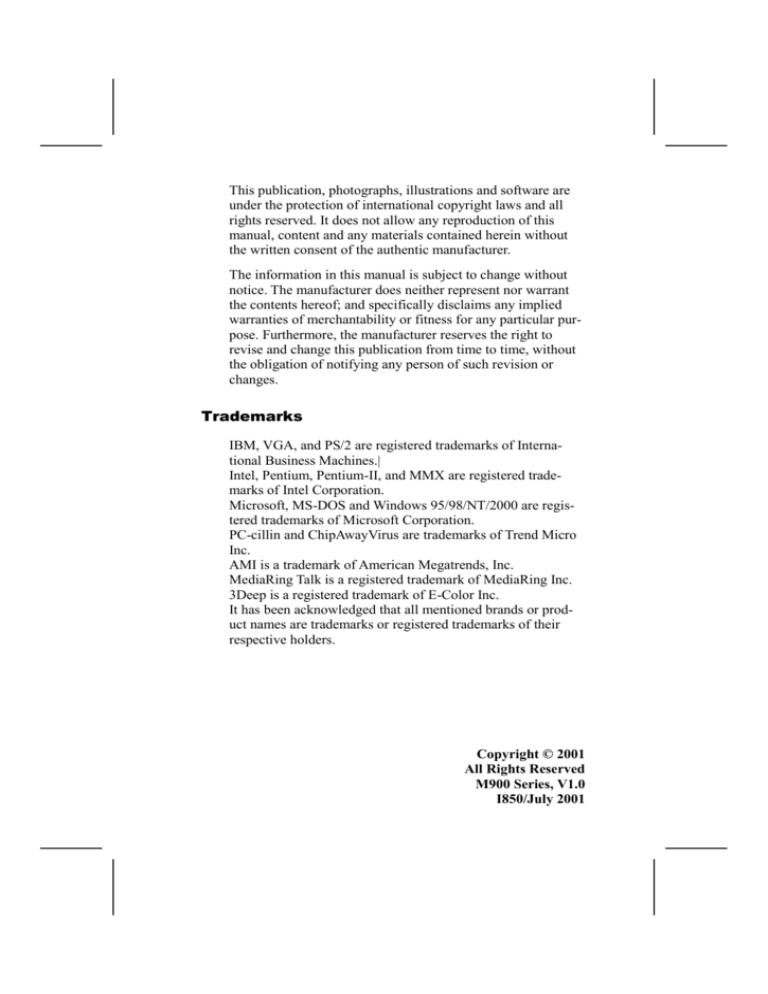
This publication, photographs, illustrations and software are
under the protection of international copyright laws and all
rights reserved. It does not allow any reproduction of this
manual, content and any materials contained herein without
the written consent of the authentic manufacturer.
The information in this manual is subject to change without
notice. The manufacturer does neither represent nor warrant
the contents hereof; and specifically disclaims any implied
warranties of merchantability or fitness for any particular purpose. Furthermore, the manufacturer reserves the right to
revise and change this publication from time to time, without
the obligation of notifying any person of such revision or
changes.
Trademarks
IBM, VGA, and PS/2 are registered trademarks of International Business Machines.|
Intel, Pentium, Pentium-II, and MMX are registered trademarks of Intel Corporation.
Microsoft, MS-DOS and Windows 95/98/NT/2000 are registered trademarks of Microsoft Corporation.
PC-cillin and ChipAwayVirus are trademarks of Trend Micro
Inc.
AMI is a trademark of American Megatrends, Inc.
MediaRing Talk is a registered trademark of MediaRing Inc.
3Deep is a registered trademark of E-Color Inc.
It has been acknowledged that all mentioned brands or product names are trademarks or registered trademarks of their
respective holders.
Copyright © 2001
All Rights Reserved
M900 Series, V1.0
I850/July 2001
ii
Table of Contents
Chapter 1: Introduction................................................................... 1
Key Features .................................................................. 2
Package Contents .......................................................... 5
Static Electricity Precautions ......................................... 6
Pre-Installation Inspection ............................................. 6
Chapter 2: Mainboard Installation ................................................... 7
Mainboard Components ................................................ 8
I/O Ports ........................................................................ 9
Installing the Processor.................................................. 9
Installing Memory Modules ........................................ 11
Jumper Settings .......................................................... 12
Panel Connector........................................................... 13
Other Devices Installation .......................................... 14
Expansion Slots Installation ........................................ 14
Connecting Optional Devices ...................................... 16
Chapter 3: BIOS Setup Utility ....................................................... 19
Introduction ................................................................. 19
Running the SetupUtility .………………………. …..20
Standard CMOS Setup Page ........................................ 21
Advanced Setup Page .................................................. 22
Power Management Setup Page .................................. 24
PCI / Plug and Play Setup Page ................................... 26
Load Optimal Settings ................................................ 27
Load Best Performance Settings ................................. 27
Features Setup Page .................................................... 27
CPU PnP Setup Page .................................................. 29
Hardware Monitor Page .............................................. 30
Exit ............................................................................. 30
Chapter 4: Software & Applications ............................................. 31
Introduction ................................................................. 31
Installing Support Software ......................................... 31
Auto-installing under Windows 98.............................. 33
iii
iv
Chapter 1
Introduction
Congratulations on purchasing the M900 mainboard. The M900 mainboard is an ATX mainboard that uses a 6-layer printed circuit board
and measures 305 x 244mm. The mainboard features a Socket 423
that accommodates Intel Pentium 4 processors supporting front side
bus (FSB) speeds up to 400 MHz and data bus bandwidths up to 3.2
GB/s.
The M900 incorporates the Intel Tehama 850 Northbridge and Intel
82801BA (ICH2) Southbridge chipsets, combining support for twochannel RAMBUS DRAM (RDRAM), 2X/4X AGP (1.5V only), and
the AC 97 codec.
The Intel 82801I/O controller hub includes an integrated audio-codec
controller that lets the processor efficiently decode sound generated by
the integrated audio system.
1
Key Features
This mainboard has these key features:
Socket 423 Processor
The PGA Socket 423
Accommodates Intel Pentium 4 CPUs
Supports a front-side bus (FSB) of 400 MHz
Supports 3.2 GB/s data bus bandwidth
Chipset
Intel’s innovative Tehama 850 Northbridge and 82801 Southbridge
chipsets are based on an innovative and scaleable architecture with
proven reliability and performance. A few of the advanced features of
the chipsets are:
Host interface controller supports 400 MHz frontside (system)
bus frequency
Supports up to 2 GB of Rambus DRAM
Supports a maximum memory bandwidth of 3.2 GB/s
AGP controller is AGP 2.0 compliant and supports 2x/4x Fast
Write Protocol (1.5V only)
PCI IDE controller supports PCI bus mastering, PIO modes
0~4, and UDMA 33/66/100
Two USB controllers double the bandwidth to 24 Mbps across
four ports
Integrated AC 97 audio that supports full surround sound with
up to 2 channels
Additional key features include support for four USB ports, an AC 97
link for audio and modem, hardware monitoring, and ACPI/OnNow
power management.
Memory Support
The mainboard accommodates Rambus DRAM up to 2 GB
using 2.5V unbuffered Rambus DRAM (RDRAM) memory
modules.
2
VGA
The M900 includes a 4xAGP slot that provides four times the
bandwidth of the original AGP specification. AGP technology
provides a direct connection between the graphics sub-system
and the processor so that the graphics do not have to compete
for processor time with other devices on the PCI bus.
AC 97 Audio Codec
The AC 97 Audio codec is compliant with the AC 97 2.1
specification, and supports 18-bit ADC (Analog Digital Converter) and DAC (Digital Analog Converter) resolution as
well as 18-bit stereo full-duplex codec with independent and
variable sampling rates.
Expansion Options
The mainboard comes with the following expansion options:
Five 32-bit PCI slots
A 4xAGP slot (AGP Pro slot optional)
A Communications Network Riser (CNR) slot
Two IDE channels and a floppy disk drive interface
The M900 supports Ultra DMA bus mastering with transfer rates of
33/66/100 MB/sec.
Onboard I/O Ports
The mainboard has a full set of I/O ports and connectors:
Two PS/2 ports for mouse and keyboard
Two serial ports
One parallel port
One MIDI/game port
Two USB ports
Audio jacks for microphone, line-in and line-out
3
BIOS Firmware
This mainboard uses AMI BIOS that enables users to configure many
system features including the following:
Power management
Wake-up alarms
CPU parameters and memory timing
CPU and memory timing
The firmware can also be used to set parameters for different processor clock speeds.
Bundled Software
PC-Cillin 2000 provides automatic virus protection under
Windows 95/98/NT/2000
MediaRing Talk provides PC to PC or PC to Phone internet
phone communication
3Deep delivers the precise imagery and displays accurate color in your monitor
WinDVD2000 is a DVD playback application (optional)
Dimensions
ATX form factor of 305 x 244 mm
4
Package Contents
Your mainboard package contains the following items:
The mainboard
The User’s Guide
One diskette drive ribbon cable and bracket
One IDE drive ribbon cable and bracket
One auto-install software support CD
Retention modules (already mounted on the board)
Two CPU retention brackets
Two dummy Rambus DRAM modules (already inserted in RIMM
slots)
Optional Accessories
You can purchase the following optional accessories for this mainboard.
Extended USB module
CNR v.90 56K Fax/Modem card
5
Static Electricity Precautions
Components on this mainboard can be damaged by static electricity.
Take the following precautions when unpacking the mainboard and
installing it in a system.
1. Keep the mainboard and other components in their original staticproof packaging until you are ready to install them.
2. During installation, wear a grounded wrist strap if possible. If you
don’t have a wrist strap, discharge static electricity by touching the
bare metal of the system chassis.
3. Handle the mainboard carefully by the edges. Avoid touching the
components unless it is absolutely necessary. During installation
put the mainboard on top of the static-protection packaging it came
in with the component side facing up.
Pre-Installation Inspection
Inspect the mainboard for damage to the components and
connectors on the board.
If you suspect that the mainboard has been damaged, do not
connect power to the system. Contact your mainboard vendor and
report the damage.
6
Chapter 2
Mainboard Installation
To install this mainboard in a system, follow the procedures in this
chapter:
Identify the mainboard components
Install a CPU
Install two or more system memory modules
Verify that all jumpers or switches are set correctly
Install the mainboard in a system chassis (case)
Connect any extension brackets or cables to connecting headers
on the mainboard
Install other devices and make the appropriate connections to the
mainboard connecting headers
Note:
1. Before installing this mainboard, make sure jumper JBAT1 is set to
Normal setting. See this chapter for information on locating JBAT1
and the setting options.
2. Never connect power to the system during installation. Doing so
may damage the mainboard.
7
Mainboard Components
Note: Any jumpers on your mainboard that do not appear in this illustration are for testing only.
8
I/O Ports
The backplane of the mainboard has a full set of I/O ports:
PS/2 Mouse
Parallel Port
PS/2 Keyboard
USB Ports
COM2/4
Line Out Jack
Serial Port COM1/3
Game/MIDI Port
Microphone Jack
LIne In Jack
1. Use the upper PS/2 port to connect a PS/2 pointing device. Use the lower PS/2 port to connect a PS/2
keyboard.
2. Use the USB ports to connect USB devices.
3. Use LPT1 to connect printers or other parallel communications devices.
4. Use the COM ports to connect serial devices such as
mice or fax/modems. COM1 is identified by the system as COM1/3. COM2 is identified by the system as
COM2/4.
5. Use the game port to connect a joystick or a MIDI device.
6. Use the three audio ports to connect audio devices.
The left side jack is for a stereo line-out signal. The
middle jack is for a stereo line-in signal. The right side
jack is for a microphone.
Installing the Processor
This mainboard has a Socket 423 processor socket. When choosing a
processor, consider the performance requirements of the system. Performance is based on the processor design, the clock speed and system
bus frequency of the processor, and the quantity of internal cache
memory and external cache memory.
9
CPU Installation Procedure
The following illustration shows CPU installation components:
Retention modules
Locking lever
CPU fan
Socket 423
Pin-1 corner
Follow these instructions to install the CPU:
1. Pull the CPU socket locking lever away from the socket to unhook it and raise the locking lever to the
upright position.
2. Identify the pin-1 corner on the CPU socket and the
pin-1 corner on the processor.
3. Match the pin-1 corners and insert the processor into
the socket. Do not use force.
4. Swing the locking lever down and hook it under the
latch on the edge of the socket.
5. Apply thermal grease to the top of the CPU.
6. Insert the CPU cooling fan/heatsink assembly.
7. Plug the CPU fan cable connector into the CPU cooling fan power supply on the mainboard (CFAN).
8. Insert the retention module clips over the edge of the
CPU fan/heatsink assembly.
10
Installing Memory Modules
This mainboard accommodates 184-pin 2.5V unbuffered Rambus
DRAM (RDRAM) memory modules. The memory chips must be
standard or registered RDRAM. The memory bus runs at 400 MHz.
Installation Procedure
The mainboard has four RIMM (Rambus DIMM) slots that accommodate up to 2 GB of memory. You can only install the memory modules
in pairs; therefore, you must install at least two RIMM modules. The
dummy Rambus DRAM modules (C-RIMM) must be inserted in unpopulated slots.
1. Align the memory module with the slot. The RIMM
slots are keyed with notches and the RIMMs are keyed
with cutouts so that they can only be installed correctly.
2. Push the latches on each side of the RIMM slot down.
3. Check that the cutouts on the RIMM module edge
connector match the notches in the RIMM slot.
Latch
Notches
Cutouts
Latch
4. Install the RIMM module into the slot and press it
firmly down so that it seats correctly. The slot latches
are levered upwards and latch on to the edges of the
RIMM when it is installed correctly.
5. Install any remaining RIMM modules.
11
6. After installing your RIMM modules, insert the C-
RIMM modules in the unoccupied slots:
R
RI IMM
M
M 4
2
Jumper Settings
Jumper JBAT1 – enables you to clear the BIOS:
1. Turn the system off.
2. Remove all ATX power connectors.
3.Short pins 2 and 3 on JBAT1.
4.Return the jumper to the normal setting.
5.Plug in all ATX power connectors
6.Turn the system on. The BIOS is returned to the default settings.
Jumper Type
Description
Setting (default)
JBAT1
3 pin
Clear CMOS
1-2: Normal
2-3: Clear
12
JBAT1
1
Jumper 1 & Jumper 2 – enable this jumper if you want keyboard
activity to turn on the computer.
Jumper
Type
JP1 &
3 pin
JP2
3 pin
Description
Keyboard
power on
Setting (default)
1-2: Enable
2-3: Disable
JP1
JP2
1
1
Jumper 12 – This jumper enables or disables the onboard audio
codec.
Jumper
Type
JP12
3 pin
Description
Enable
onboard audio codec
Setting (default)
1-2: Enable
JP12
2-3: Disable
1
The Panel Connector
The panel connector provides a standard set of switch and LED connectors usually found on ATX or micro-ATX cases. Refer to the table
below for information:
Device
Empty
N/C
Power ON/OFF
Reset Switch
Green LED
Indicator
HDD LED
Pins
10
9
6, 8
5, 7
+2, -4
+1, -3
10
9
Empty
(Pin 10)
N/C
(Pin 9)
Reset Switch
(Pins 5, 7)
Power Switch
(Pins 6, 8)
Green LED
(Pins 2, 4)
HDD LED
(Pins 1, 3)
2
1
13
Other Devices Installation
Floppy Diskette Drive Installation
The mainboard has a floppy diskette drive (FDD) interface ships with
a diskette drive ribbon cable that supports one or two floppy diskette
drives. You can install a 5.25-inch drive and a 3.5-inch drive with various capacities. The floppy diskette drive cable has one type of
connector for a 5.25-inch drive and another type of connector for a
3.5-inch drive.
IDE Devices
Your mainboard has a primary and secondary IDE channel interface
(IDE1 and IDE2). An IDE ribbon cable supporting two IDE devices is
bundled with the mainboard. IDE devices have jumpers or switches
that are used to set the IDE device as MASTER or SLAVE. Refer to
the IDE device user’s manual.
If you want to install more than two IDE devices, get a second IDE
cable and you can add two more devices to the secondary IDE channel.
When installing two IDE devices on one cable, ensure that one device
is set to MASTER and the other device is set to SLAVE.
This mainboard supports UltraDMA 33/66/100. UDMA is a technology that accelerates the performance of devices in the IDE channel.
Install IDE devices that support UDMA and use IDE cables that support UDMA for better performance.
Expansion Slots Installation
This mainboard has five 32-bit PCI (Peripheral Components Interconnect) expansion slots, one 4xAGP slot, and one Communications and
Networking Riser (CNR) slot.
PCI Slots
PCI slots are used to install expansion cards that have the
32-bit PCI interface.
14
4 x AGP Slot
The 4xAGP slot is used to install a graphics adapter that supports the
4xAGP specification and has a 4xAGP edge connector. The 4xAGP
slot only supports 1.5V 4xAGP and 2xAGP cards.
CNR Slot
This slot is used to insert CNR cards including LAN, Modem, and
Audio functions.
CNR1
AGP
PCI1 PCI2 PCI3 PCI4 PCI5
1. Remove a blanking plate from the system case corresponding to the slot you are going to use.
2. Install the edge connector of the add-on card into the
expansion slot. Ensure that the edge connector is correctly seated in the slot.
3. Secure the metal bracket of the card to the system case
with a screw.
15
Connecting Optional Devices
WOL1/WOM1: Wake On LAN/Wake On Modem
If you have installed a LAN card, use the cable provided with the card
to plug into the mainboard WOL1 connector. This enables the Wake
On LAN (WOL) feature. When your system is in a power-saving
mode, any LAN signal automatically resumes the system. You must
enable this item using the Power Management page of the Setup Utility.
Pin
1
2
3
Signal Name
5VSB
Ground
SENSE
If you have installed a modem, use the cable provided with the modem
to plug into the mainboard WOM1 connector. This enables the Wake
On Modem (WOM) feature.
When your system is in a power-saving mode, any modem signal automatically resumes the system. You must enable this item using the
Power Management page of the Setup Utility. See Chapter 3 for more
information.
USB2: USB port 3, 4
The mainboard has two USB ports installed on the rear edge I/O port
array. However, some computer cases have a special module that
mounts USB ports at the front of the case. If you have this kind of
case, use auxiliary USB connectors USB2 and USB3 to connect the
front-mounted ports to the mainboard.
Pin
Signal Name
Pin
Signal Name
1
3
5
7
9
Port 3 power
Port 3 USBPort 3 USB+
Port 3 ground
Protection key
2
4
6
8
10
Port 4 power
Port 4 USBPort 4 USB+
Port 4 ground
Over current sensor
16
JIR1: Consumer infrared port
The mainboard supports a Consumer Infrared (CIR) data port. Infrared
ports allow the wireless exchange of information between your computer and similarly equipped devices such as printers, laptops,
Personal Digital Assistants (PDAs), and other computers.
Pin
1
3
5
Signal Name
CIR receive
+5V
IR transmit
Pin
2
4
6
Signal Name
KEY
Ground
IR receiver
17
18
Chapter 3
BIOS Setup Utility
Introduction
The BIOS Setup Utility records settings and information about your
computer such as the date and time, the kind of hardware installed,
and various configuration settings. Your computer uses this information to initialize all the components when booting up and functions
as the basis for coordination between system components.
If the Setup Utility configuration is incorrect, it may cause the system
to malfunction. It can even stop your computer from booting properly.
If this happens, you can use the clear CMOS jumper to clear the
CMOS memory used to store the configuration information.
You can run the setup utility and manually make changes to the configuration. You might need to do this to configure some of the
hardware that you install on or connect to the mainboard, such as the
CPU, system memory, disk drives, etc.
19
Running the Setup Utility
Each time your computer starts, before the operating system loads, a
message appears on the screen that prompts you to “Hit <DEL> if you
want to run SETUP”. When you see this message, press the Delete
key and the Main menu page of the Setup Utility appears on your
monitor.
AMIBIOS SIMPLE SETUP UTILITY – VERSION 1.21.05
(C) 2000 American Megatrends, Inc. All Rights Reserved
Standard CMOS Setup
Features Setup
Advanced Setup
CPU PnP Setup
Power Management Setup
Hardware Monitor
PCI / Plug and Play Setup
Change Password
Load Optimal Settings
Exit
Load Best Performance Settings
Esc : Quit
: Select Item (Shift)F2 : Change Color F5 : Old Values
F6 : Optimal values
F7 : Best performance values F10 : Save&Exit
Standards COMOS setup for changing time, date, hard disk type, etc.
You can use the cursor arrow keys to highlight any of the options on
the main menu page. Press Enter to select the highlighted option. To
leave the setup utility, press the Escape key. To cycle through the Setup Utility’s optional color schemes hold down the Shift key and press
F2.
Some of the options on the main menu page lead to tables of items
with installed values. In these pages, use the cursor arrow keys to
highlight the items, and then use the PgUp and PgDn keys to cycle
through the alternate values for each of the items. Other options on the
main menu page lead to dialog boxes which require you to answer Yes
or No by hitting the Y or N keys.
If you have already made changes to the setup utility, press F10 to
save those changes and exit the utility. Press F5 to reset the changes to
the original values. Press F6 to install the setup utility with a set of
default values. Press F7 to install the setup utility with a set of highperformance values.
20
Standard CMOS Setup Page
This option displays a table of items defining basic information about
your system.
AMIBIOS SETUP – STANDARD CMOS SETUP
(C) 2000 American Megatrends, Inc. All Rights Reserved
Date (mm/dd/yy) : Tue Oct 24, 2000
Time (hh/mm/ss) : 14:26:53
Type
Pri Master : Auto
Pri Slave : Auto
Sec Master : Auto
Sec Slave : Auto
LBA Blk
PIO 32Bit
Size Cyln Head WPcom Sec Mode Mode Mode Mode
off
off
off
off
Floppy Drive A : 1.44 MB 3 1/2”
Floppy Drive B : Not Installed
Month : Jan – Dec
Day : 01 – 31
Year : 1901 – 2099
Date & Time
Pri Master
Pri Slave
Sec Master
Sec Slave
Floppy Drive A
Floppy Drive B
ESC : Exit
: Select Item
PU/PD/+/- : Modify
(Shift)F2 : Color
F3 : Detect All HDD
Use these items to set up system date and
time
Use these items to configure devices connected to the Primary and Secondary IDE
channels. To configure an IDE hard disk
drive, choose Auto. If the Auto setting fails to
find a hard disk drive, set it to User, and then
fill in the hard disk characteristics (Size,
Cyls, etc.) manually. If you have a CD-ROM
drive, select the setting CDROM. If you have
an ATAPI device with removable media (e.g.
a ZIP drive or an LS-120), select Floptical.
Use these items to set up size and capacity of
the floppy diskette drive(s) installed in the
system.
21
Advanced Setup Page
This option displays a table of items that define advanced information
about your system.
AMIBIOS SETUP – ADVANCED SETUP
(C) 2000 American Megatrends, Inc. All Rights Reserved
Quick Boot
1st Boot Device
2nd Boot Device
3rd Boot Device
Try Other Boot Devices
S.M.A.R.T. for Hard Disks
BootUp Num-Lock
Floppy Drive Swap
Floppy Drive Seek
Password Check
Boot To OS/2 > 64MB
L1 Cache
L2 Cache
Cache Bus ECC
System BIOS Cacheable
Video BIOS Cacheable
Auto detect PCI Clock
CLK Spread Spectrum
Quick Boot
1st Boot Device
2nd Boot Device
3rd Boot Device
Try Other Boot
Device
S.M.A.R.T. for
Hard Disks
BootUp NumLock
22
Enabled
IDE-0
Floppy
CDROM
Yes
Disabled
On
Disabled
Disabled
Setup
No
Enabled
Enabled
Disabled
Enabled
Disabled
Disabled
Disabled
ESC : Quit
: Select Item
F1
: Help
PU/PD/+/- : Modify
F5
: Old Values (Shift)F2 : Color
F6
: Load BIOS Defaults
F7
: Load Setup Defaults
If you enable this item, the system starts
up more quickly be elimination some of
the power on test routines.
Use these items to determine the device
order the computer uses to look for an
operating system to load at start-up time.
If you enable this item, the system will
also search for other boot devices if it fails
to find an operating system from the first
two locations.
Enable this item if any IDE hard disks
support the S.M.A.R.T. (Self-Monitoring,
Analysis and Reporting Technology) feature.
This item determines if the Num Lock key
is active or inactive at system start-up
time.
Floppy Drive
Swap
Floppy Drive
Seek
Password
Check
Boot to OS/2 >
64MB
L1/L2 Cache
Cache Bus
ECC
System BIOS
Cacheable
Video BIOS
Cacheable
Auto detect
PCI Clock
CLK Spread
Spectrum
If you have two diskette drives installed
and you enable this item, drive A becomes
drive B and drive B becomes drive A.
If you enable this item, your system will
check all floppy disk drives at start up.
Disable this item unless you are using an
old 360KB drive.
If you have entered a password for the
system, use this item to determine, if the
password is required to enter the Setup
Utility (Setup) or required both at start-up
and to enter the Setup Utility (Always).
Enable this item if you are booting the
OS/2 operating system and you have more
than 64MB of system memory installed.
Leave these items enabled since all the
processors that can be installed on this
board have internal L1/L2 cache memory.
This item can perform the error check correction function.
If you enable this item, a segment of the
system BIOS will be cached to main
memory for faster execution.
If you enable this item, a segment of the
system BIOS will be cached to main
memory for faster execution.
When this item is enabled, BIOS will disable the clock signal of free PCI slots.
Use this item to set the system bus spread
spectrum for the installed processor.
23
Power Management Setup Page
This page sets some of the parameters for system power management
operation.
AMIBIOS SETUP – POWER MANAGEMENT SETUP
(C) 2000 American Megatrends, Inc. All Rights Reserved
Power Management/APM
ACPI Aware O/S
Standby Time Out
Suspend Time Out
Wake Up on Ring
Wake Up on LAN
Wake Up on PME
K/B Power-on function
Stroke keys selected
Resume by Alarm
RTC Alarm Date
RTC Alarm Hour
RTC Alarm Minute
RTC Alarm Second
Power Management
ACPI Aware
O/S
Standby
Time Out
Suspend
Time Out
24
Enabled
Yes
Disabled
Disabled
Disabled
Disabled
Disabled
Disabled
N/A
Disabled
15
12
30
30
ESC : Quit
: Select Item
F1
: Help
PU/PD/+/- : Modify
F5
: Old Values (Shift)F2 : Color
F6
: Load BIOS Defaults
F7
: Load Setup Defaults
Use this item to enable or disable a power
management scheme. If you enable power
management, you can use the items below to
set the power management operation. Both
APM and ACPI are supported.
This item supports ACPI (Advanced Configuration and Power management Interface). Use
this item to enable or disable the ACPI feature.
This sets the timeout for Standby mode in
minutes. If the time selected passes without
any system activity, the computer will enter
power-saving Standby mode.
This sets the timeout for Suspend mode in
minutes. If the time selected passes without
any system activity, the computer will enter
power-saving Suspend mode.
Wake Up on
Ring
Wake Up on
LAN
Wake Up on
PME#
Keyboard
Power On
Function
Resume By
Alarm
RTC Alarm /
Date / Hour /
Minute / Second
The system can be turned off with a software
command. If you enable this item, the system
can automatically resume if there is an incoming call on the Fax/Modem. You must use an
ATX power supply in order to use this feature.
The system can be turned off with a software
command. If you enable this item, the system
can automatically resume if there is an incoming call on the Fax/Modem. You must use an
ATX power supply in order to use this feature.
The system can be turned off with a software
command. If you enable this item, the system
can automatically resume if there is an incoming call on the Fax/Modem. You must use an
ATX power supply in order to use this feature.
Use this item to do wake-up action if inserting
the PCI card.
If you enable this item, you can turn the system on and off by pressing hot keys on the
keyboard. You must enable the Keyboard
Power On jumper and use an ATX power
supply in order to use this feature.
The system can be turned off with a software
command. If you enable this item, the system
can automatically resume if there is an incoming call on the Fax/Modem. You must use an
ATX power supply in order to use this feature.
The system can be turned off with a software
command. If you enable this item, the system
can automatically resume at a fixed time
based on the system’s RTC (realtime clock).
Use the items below this one to set the date
and time of the wake-up alarm. You must use
an ATX power supply in order to use this feature.
PCI / Plug and Play Setup Page
25
This page sets some of the parameters for devices installed on the PCI
bus and devices that use the system plug and play capability.
AMIBIOS SETUP – PCI / PLUG AND PLAY SETUP
(C) 2000 American Megatrends, Inc. All Rights Reserved
Plug and Play Aware O/S
Primary Graphics Adapter
Allocate IRQ for PCI VGA
VGA Frame Buffer USWC
PCI Frame Buffer USWC
Graphics Aperture Size
Plug and Play
Aware O/S
Primary
Graphics
Adapter
Allocate IRQ
for PCI VGA
VGA Frame
Buffer USWC
PCI Frame
Buffer USWC
Graphics Aperture Size
Yes
PCI
Yes
Disabled
Disabled
64 MB
ESC : Quit
: Select Item
F1
: Help
F5
: Old Values (Shift)F2 : Color
PU/PD/+/- : Modify
F6
: Load BIOS Defaults
F7
: Load Setup Defaults
Enable this item if you are using an O/S that
supports Plug and Play such as Windows 95 or
98.
This item indicates if the primary graphics
adapter uses the PCI or the AGP bus. The default PCI setting still lets the onboard display
work and allows the use of a second display
card installed in a PCI slot.
If this item is enabled, an IRQ will be assigned
to the PCI VGA graphics system. You set this
value to No to free up an IRQ.
These item sets the VGA frame buffer for
USWC. USWC (Uncacheable, Speculative
Write Combining) is a cache memory technology. Leave these items at the default value.
These item sets the PCI frame buffer for
USWC. USWC (Uncacheable, Speculative
Write Combining) is a cache memory technology. Leave these items at the default value.
This item defines an AGP for the graphics.
Leave this item at the default value 64MB.
Load Optimal Settings
If you select this item and press Enter a dialog box appears. If you
26
press Y, and then Enter, the Setup Utility loads a set of fail-safe default values. These default values are not very demanding and they
should allow your system to function with most kinds of hardware and
memory chips.
Load Best Performance Settings
If you select this item and press Enter a dialog box appears. If you
press Y, and then Enter, the Setup Utility loads a set of bestperformance default values. These default values are quite demanding and your system might not function properly if you are using
slower memory chips or other low-performance components.
Features Setup Page
This page sets some of the parameters for peripheral devices connected to the system.
AMIBIOS SETUP – FEATURES SETUP
(C) 2000 American Megatrends, Inc. All Rights Reserved
OnBoard FDC
OnBoard Serial Port1
OnBoard Serial Port2
Serial Port2 Mode
OnBoard Parallel Port
Parallel Port Mode
Parallel Port IRQ
Parallel Port DMA Channel
AC97 Audio Controller
AC97 Modem Controller
OnBoard MIDI Port
MIDI Port IRQ
OnBoard Game Port
USB Function
USB Function for DOS
OnBoard
FDC
OnBoard Serial Port1/2
Enabled
3F8/COM1
2F8/COM2
Normal
378
Normal
7
N/A
Auto
Auto
330
10
200
Enabled
Disabled
ESC : Quit
: Select Item
F1
: Help
PU/PD/+/- : Modify
F5
: Old Values (Shift)F2 : Color
F6
: Load BIOS Defaults
F7
: Load Setup Defaults
Use this item to enable or disable the onboard
floppy disk drive interface.
Use these items to enable or disable the onboard
COM1/2 serial port, and to assign a port address.
27
Use this item to enable or disable the onboard
LPT1 parallel port, and to assign a port address.
The Auto setting will detect and available address.
Parallel Port Use this item to set the parallel port mode. You
can select SPP (Standard Parallel Port), ECP (ExMode
tended Capabilities Port), EPP (Enhanced
Parallel Port), or ECP + EPP.
Parallel Port Use this item to assign a DMA channel to the
parallel port.
DMA
Onboard IDE Use this item to enable or disable either or both
of the onboard Primary and Secondary IDE
channels.
Parallel Port Use this item to assign IRQ to the parallel port.
IRQ
AC’97 Audio This item enables or disables the AC’97 audio
chip.
Controller
This item enables or disables the AC’97 modem
AC’97 Mochip.
dem
Controller
Use this item to enable or disable the onboard MIDI
OnBoard
port, and to assign a port address.
MIDI Port
Use this item to assign IRQ 7 to the parallel port.
MIDI Port
IRQ
This item enables or disables the I/O address for
OnBoard
the game port.
Game Port
Use this item to select the USB ports or disabled.
USB Function
Enable this item if you plan to use the USB ports
USB Function for DOS on this mainboard in a DOS environment.
Onboard
Parallel Port
28
CPU PnP Setup Page
This page helps you manually configure the mainboard for the CPU.
The system will automatically detect the type of installed CPU and
make the appropriate adjustments to the items on this page.
AMIBIOS SETUP – CPU PnP SETUP
©2000 American Megatrends, Inc. All Rights Reserved
CPU BRAND
CPU Type
CPU Speed
CPU Ratio
CPU Frequency
CPU VCORE
INTEL
Pentium 4
1.7 GHz
17.0x
100 MHz
+1.680V
ESC
F1
F5
F6
F7
CPU
BRAND/Type/
Core Voltage/Ratio
/Frequency
CPU Speed
:
:
:
:
:
Quit
: Select Item
Help
PU/PD/+/- : Modify
Old Values (Shift)F2 : Color
Load Optimal values
Load Best performance values
These items show the type, core voltage, ratio and frequency of CPU installed in your
system.
This item decides CPU speed installed in
your system.
29
Hardware Monitor Page
This page sets some of the parameters for the hardware monitoring
function of this mainboard.
AMIBIOS SETUP – HARDWARE MONITOR
(C) 2000 American Megatrends, Inc. All Rights Reserved
*** Hardware Monitor ***
System Temperature
CPU Temperature
System Fan Speed
Power Fan Speed
CPU Fan Speed
VBAT
+ 3,300V
+ 5.000V VCC
-- 5,000V
--12,000V
+ 12,000V
CPU / System
Temperature
FANs & Voltage
Measurements
38C/100F
58C/138F
0 RPM
0 RPM
4655 RPM
+ 3,392V
+ 3,328V
+ 4,976V
-- 5,292V
--11,890V
+11,856V
ESC : Quit
: Select Item
F1
: Help
PU/PD/+/- : Modify
F5
: Old Values (Shift)F2 : Color
F6
: Load BIOS Defaults
F7
: Load Setup Defaults
These items display CPU and system temperature measurement.
These items indicate cooling fan speeds in
RPM and the various system voltage measurements.
Exit
Highlight this item and press Enter to save the changes that you have
made in the Setup Utility configuration and exit the program. When
the Save and Exit dialog box appears, press Y to save and exit, or
press N to exit without saving.
30
Chapter 4
Software & Applications
Introduction
The support software CD-ROM that is included in the mainboard
package contains all the drivers and utility programs needed to properly run our products. Below you can find a brief description of each
software program, and the location for your mainboard version. More
information on some programs is available in a README file, located
in the same directory as the software.
If the operating system used in your system is Windows 98, it will
automatically install all the drivers and utilities for your board.
See the Auto-Installing under Windows 98 section.
Installing Support Software
The software on the support CD-ROM is for Windows 95/NT/2000
and Windows 98. The installation procedure differs depending on
which Operating System you have, but the automatic installation is
now for Win98 only.
Installing under Windows 95/NT/2000
To install support software for Windows 95/NT/2000 follow this general procedure:
1. Insert the support CD-ROM disc in the CD-ROM drive.
(The system might get an error message from the PnP function. Don’t
care the message. You don’t really need that file to install the drivers)
2. Use My Computer or Windows Explorer to look at the directory
structure. You must use the Open command in the right-button menu.
Double-clicking on the drive icon will result in an error message because the disc’s AutoRun feature doesn’t work in Windows
95/NT/2000.
3. Execute the EXE file name given in the description below.
31
Note: The correct path name for each software driver is provided,
where D: identifies the CD-ROM drive letter – modify if necessary.
Bus Master IDE Driver
The IDE Bus Master Drivers allows the system to properly manage
the IDE channels on the mainboard. You need to install two drivers if
you are running Windows 9x.
Windows 9x – D:\IDE\INTEL850
USB Driver
The USB Driver allows the system to recognize the USB ports on the
mainboard. You need to install this driver if you are running Windows
95. Windows 95 OSR2 does not require this driver.
This driver is available for:
Win95 – D:\USB\EUSBSUPP\USBSUPP.EXE
Win95 (Chinese) – D:\USB\CUSBSUPP\CUSBSUPP.EXE
3Deep Software
Find the software here:
D:\3Deep\3Deep 3.3\Setup.EXE
Sound Driver
Find the software here:
D:\Sound\Driver\ALC200
32
BIOS Update Utility
The BIOS Update utility allows you to update the BIOS file on the
mainboard to a newer version. You can download the latest version of
the BIOS setup available for your mainboard from the website.
D:\UTILITY\AMINFXXX.EXE
PC-Cillin Software
The PC-cillin software program provides anti-virus protection for your
system.
This program is available for:
Win9x – D:\PC-CILLIN\
Auto-installing under Windows 98
The support software CD-ROM disc loads automatically under Windows 98. When you insert the CD-ROM disc in the system CD-ROM
drive the Autorun feature will automatically bring up the install screen.
The screen has three buttons on it, Setup, Browse CD and Exit. See
the following screen illustration.
When you click on the Setup button the software installation program
will run and you can select what kind of installation you want to do, as
explained later in this section.
The Browse CD button is the standard Windows command that allows
you to examine the contents of the disc using the Windows 98 file
browsing interface.
33
The Exit button closes the Auto Setup window. To run the program
again, reinsert the CD-ROM disc in the drive or click on AutoRun in
the context sensitive menu for the CD-ROM drive icon in a file browser
window.
Installing Software with Auto Setup
To install support software for the system board follow this procedure:
1. Click on the Setup button. The install program will load
and display the following screen. Click the Next button.
2. Select the items that you want to setup by clicking on it
(the default options are recommended). Click the Next
button to proceed.
3. The support software will automatically install.
Once any of the installation procedures start, software is automatically
installed in sequence. You will need to follow the onscreen instructions, confirm commands and allow the computer to restart as few
times as is needed to complete installing whatever software you se34
lected to install. When the process is finished, all the support software
will be installed and working.
There are some utilities that you have to manually install if you need,
check to the above section.
35


